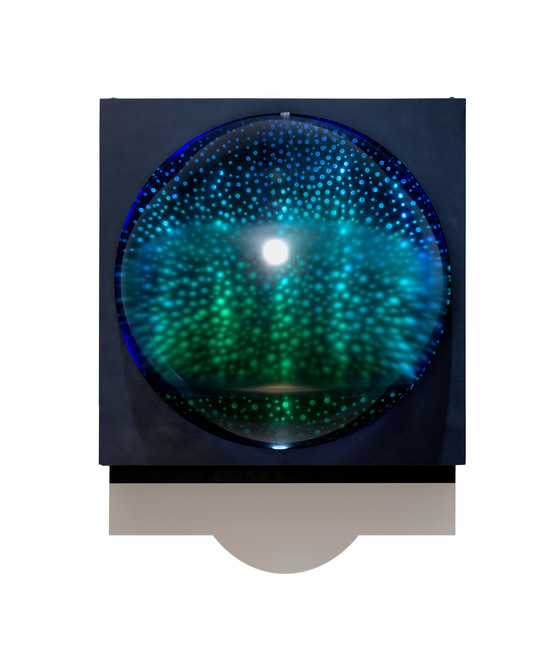Curator Notes
Throughout his career, Kosice has pushed the experimental limits of art—materially and theoretically. His interest in experimentation and the transformative power of art is exemplified by his works from the 1960s and 1970s. While many of his colleagues remained committed to abstraction and orthodox geometry (an area he helped pioneer in Argentina), Kosice reinvented himself and became a successful figure in the international field of kinetic art. His early interest in science, technology, and utopianism led him to create his hydro-kinetic sculptures, which culminated in his Ciudad hidroespacial (Hydrospatial City, 1946–1972, Museum of Fine Arts, Houston), perhaps his most important, if unconventional project. This large-scale installation, which consists of multiple sculptures/maquettes, embodies Kosice’s utopian vision for a new city suspended above ground to accommodate the planet’s overpopulation—a world where people would inhabit art in space.
Hidroactivity is an excellent example of Kosice’s ruminations on utopianism and the aesthetic value of water. The box includes a hemispherical plastic container in which water is constantly recycled, placed against a dark panel peppered with glowing green lights that recalls outer space. While the acrylic encasement imposes order on water, air activates the piece into poetic motion. The static object transforms into an incessantly moving and changing structure, creating a unique experience for each viewer. Kosice envisioned that the “architecturalization” of water had greater sociological implications, invoking the utopian ideal that architecture and urbanism can be developed in all spaces and dimensions. Water, as a key element and vector of energy, could also be used as a force of aesthetic transmission. Though his radical proposals read more like poetic science fiction, they are indicative of his overall interest in creating a better human ecology. “When you talk about artists,” said Kosice, “you’re talking about people who are trying to be ahead of their time, forerunners of something. If this isn’t the creator’s role, then who else is going to have the vision make sense of things that are still unknown.”
Ilona Katzew, Curator and Department Head, Latin American Art and Ellen Dooley, Curatorial Intern, Latin American Art
More...
Hidroactivity is an excellent example of Kosice’s ruminations on utopianism and the aesthetic value of water. The box includes a hemispherical plastic container in which water is constantly recycled, placed against a dark panel peppered with glowing green lights that recalls outer space. While the acrylic encasement imposes order on water, air activates the piece into poetic motion. The static object transforms into an incessantly moving and changing structure, creating a unique experience for each viewer. Kosice envisioned that the “architecturalization” of water had greater sociological implications, invoking the utopian ideal that architecture and urbanism can be developed in all spaces and dimensions. Water, as a key element and vector of energy, could also be used as a force of aesthetic transmission. Though his radical proposals read more like poetic science fiction, they are indicative of his overall interest in creating a better human ecology. “When you talk about artists,” said Kosice, “you’re talking about people who are trying to be ahead of their time, forerunners of something. If this isn’t the creator’s role, then who else is going to have the vision make sense of things that are still unknown.”
Ilona Katzew, Curator and Department Head, Latin American Art and Ellen Dooley, Curatorial Intern, Latin American Art

